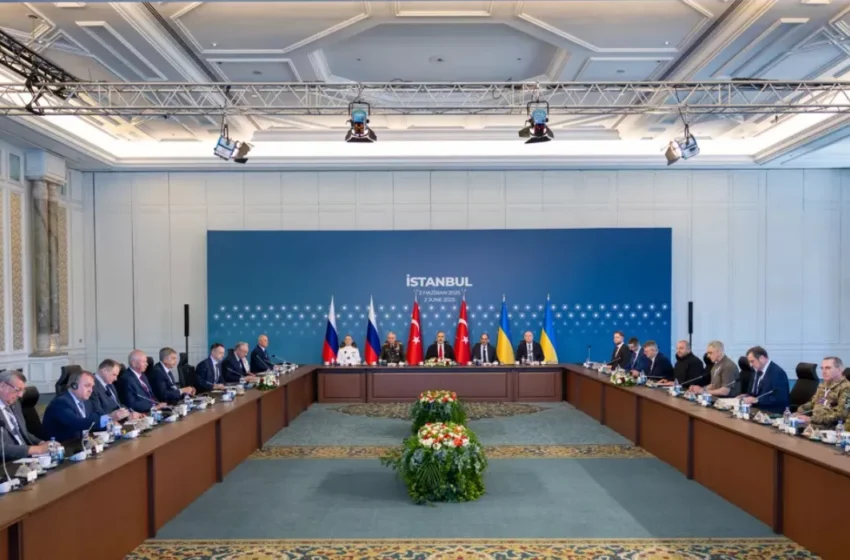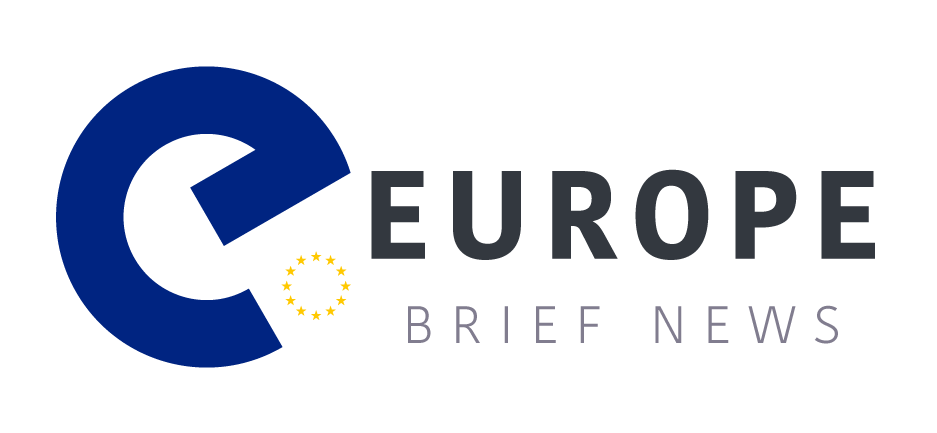
Ukraine Crisis ( Europe Brief News): Russia and Ukraine have agreed in Istanbul to exchange at least 1,000 prisoners of war and repatriate 6,000 bodies in a significant post-conflict deal.
For roughly 1,000 POWs on each side, the nations will establish a new prisoner exchange. All ill soldiers are included in this, as are those under 25. Additionally, 6,000 deceased soldiers’ bodies will be returned from each camp.
Delegations from Russia and Ukraine returned to Istanbul two weeks after the initial discussions in Turkey.
Since Russian President Putin’s aide Vladimir Medinsky and Ukrainian Defense Minister Rustem Umerov are once again leading the conversations, it appears that the earlier discussions are being repeated.
Turkish Foreign Minister Hakan Fidan is leading the talks. “These talks will lead to results,” Fidan says confidently at the start of the negotiations.
Discussions that ended up lasting an hour, which was significantly less time than the last one. As anticipated, there was no significant breakthrough. Preliminary expectations for this second round of negotiations in Turkey were already extremely low.
The first person to announce that Ukraine and Russia are preparing another prisoner exchange is Ukrainian President Volodymyr Zelensky. At a NATO meeting in Lithuania, he made this statement to the media. He doesn’t provide specifics.
Shortly later, Umerov, the head of the Ukrainian mission, offers additional clarification. For instance, all prisoners of war who are gravely ill will be traded with one another. Additionally, all prisoners of war under the age of twenty-five.
Zelensky affirmed later in the evening that there were “roughly 1,000 POWs on each side.” Another set of 200 inmates can be present on either side. This week would be the date of the trade.
Both sides have a large number of bodies in addition to surviving POWs. Additionally, the two nations have come to an agreement on that matter. Each of them will trade 6,000 bodies with the others, for a total of 12,000, ed. “Next week” is when Medinsky says the handover will happen.
To facilitate the recovery of further dead, Medinsky has “suggested a 2-3 day ceasefire at certain locations.” Whether a consensus has been established on this is unclear.
There are still some unresolved concerns, but the second round of negotiations has undoubtedly already produced some results.
A memorandum has been exchanged between the two nations. With the different requirements that each side has and that must be fulfilled in order to reach a full ceasefire or even peace, this is a sort of step-by-step approach. This idea “will be reviewed in the coming week,” according to Ukraine.
The Russian memorandum that the delegation led by Vladimir Medinsky handed over to Ukraine has been leaked by several Russian state media. That document is a list of conditions that Ukraine must agree to in order to reach a ceasefire or a peace agreement.
“If that is true, then these are very far-reaching demands that show that Russia is not prepared to compromise,”
says Ukraine expert Marijn Trio. We list them:
The Donetsk, Luhansk, Zhaporizhia, and Kherson regions are among the four areas that Russia has primarily dominated since the 2022 invasion, and Russia wants Ukraine to remove all of its forces from Russian territory.
Along with the Crimean peninsula, which it unlawfully annexed in 2014, Russia wants those four areas to be acknowledged as part of its sovereignty.
Russia also demands the lifting of all current economic sanctions and limitations between Ukraine and Russia.
Restoring economic relations with Russia would allow gas to once more pass through pipes in Ukraine.
Along with a clear prohibition on the placement of such weapons on Ukrainian soil, the text recommends that Ukraine continue to be a non-nuclear state.
Additionally, Ukraine is limited in the quantity of troops and weapons it can possess.
A peace deal could not be finalized until new elections were held. President Zelensky is being pushed aside by Russia.
Additionally, until a truce is achieved, the West is no longer permitted to give intelligence or weaponry.
In addition, Ukraine must maintain its neutrality going forward and its territory cannot be used for military purposes. Thus, a European defense force is not an option.
In addition, the two sides are said to have discussed a possible meeting between Ukrainian President Zelensky and Russian President Putin, with or without the presence of US President Trump.
“To solve the important issues, the leaders need to talk to each other,”
Umerov said.
Umerov, the head of the Ukrainian delegation, also claims to have sent Russia a list of different children’s names via Turkey. At the start of the conflict, these kids were kidnapped and sent to Russia.
It is unlawful and a crime for which Russian President Vladimir Putin has an arrest warrant issued by the International Criminal Court (ICC) in The Hague. Russia does not recognize the ICC, thus this decision is merely symbolic.
At any rate, Medinsky disputes reports of kid deportations from Russia. He prefers to use the terms “evacuated” and “rescued” instead. This list “with 339 names” is something Putin’s Russian confidant admits he received.
When and whether a fresh round of negotiations will occur is still up in the air. “Meet again at the end of June to make progress” is what Ukraine says they would prefer. Whether Russia will pay attention to that is still up in the air.
What are Ukraine’s main demands beyond the prisoner swap?
In order to quickly halt the violence and provide time for negotiations on a long-term solution, Ukraine demands a ceasefire that lasts for at least 30 days.
Hundreds or thousands of children who have been kidnapped or forced deported by Russia from occupied territory are demanded to return by Ukraine.
Kyiv wants all citizens detained or imprisoned by Russian forces to be freed.
Ukraine insists on keeping control of its territory and refuses Russian calls to leave the four partially occupied areas of Donetsk, Luhansk, Zaporizhzhia, and Kherson.


